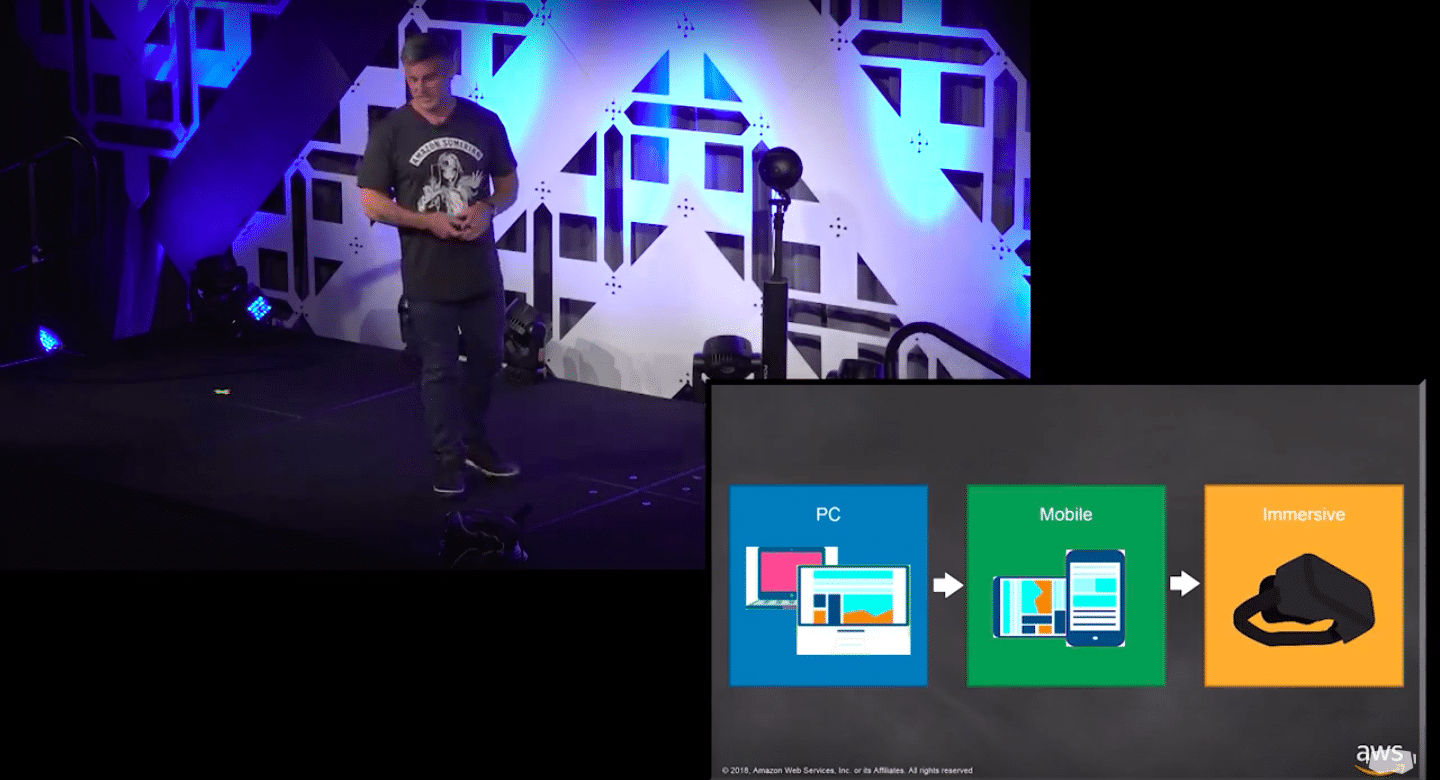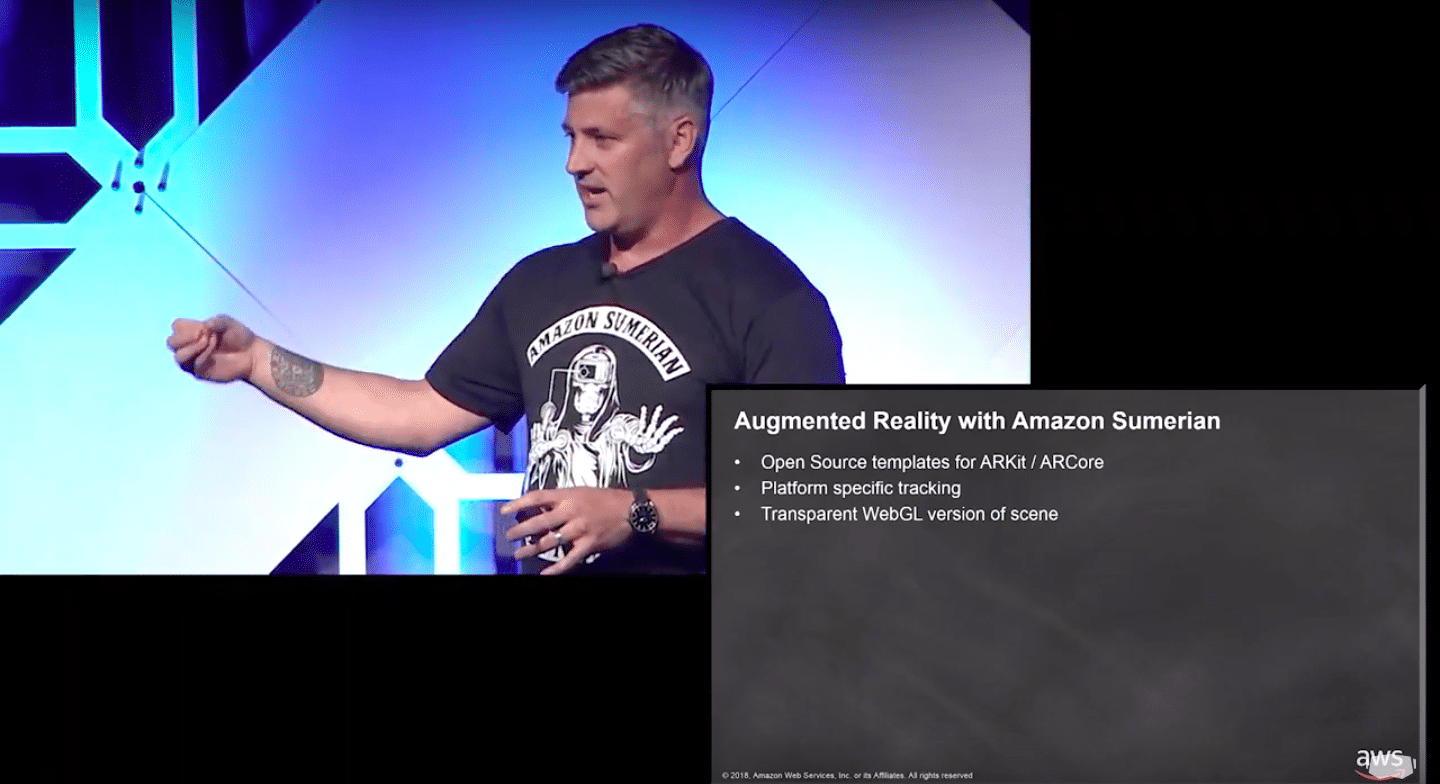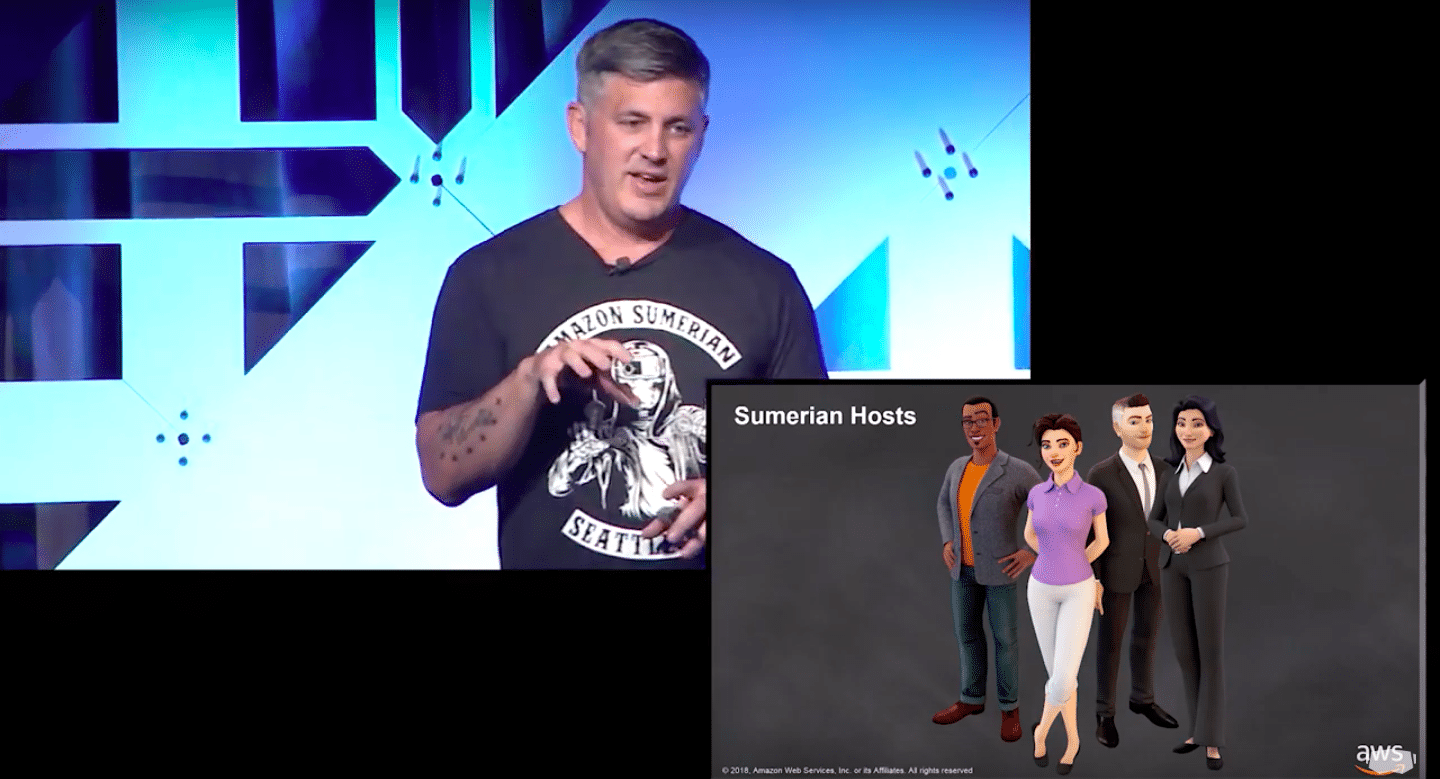
XR Talks is a series that features the best presentations and educational videos from the XR universe. It includes embedded video, as well as narrative analysis and top takeaways. Speakers’ opinions are their own.
It’s an interesting time for spatial computing. There’s optimism and resilience, while also a bit of a hangover from the 2016 hype cycle. As often happens in such stages, there’s a shift to pragmatism, said Amazon Sumerian GM Kyle Roche at the VRARA Global Summit (video below).
“We’re talking about rendering quality, headset prices, bandwidth, 5G and all these kind of things that we know that will help move the needle,” Roche said on stage. “But what’s really important to enterprise customers is, ‘how do I prove that it’s worthwhile? How do I prove that there’s ROI’?”
Part of accelerating that adoption curve is to lower barriers to entry, and that’s the rallying cry of Amazon Sumerian (see our interview with Roche). Its core goal is to accommodate a range of personas and technical skill within the brands and enterprises that will be XR’s first adopters.

This takes form in a browser-based 3D engine with drag & drop visual editing. The output can be VR or AR, and export to development environments like ARkit and ARCore. Most of the workflow is done in a visual state without coding, but web developers can also jump in with JavaScript.
“AR and VR are already super important and huge in games entertainment,” said Roche. “But immersive computing is really another leap in the natural evolution of how we converse… and that opens up a really big opportunity for normal developers and people building everyday apps.”
With perspective grounded in cloud computing (Sumerian sits under AWS), Roche also invokes historical lessons — our favorite pastime. Specifically, XR adoption mirrors last decade’s enterprise cloud adoption. It’s a similar mindset leap, and further compels tools to ease adoption.
“Ten years ago, when I had my secure data under my desk… moving all that to the cloud was an unorthodox move at the time,” he said. “It was expensive, ROI was very speculative and people were kind of hesitant to do that type of thing. I think we see that sort of similarity right now.”

Sticking with historical lessons from cloud computing, XR adoption can also be accelerated by lowering cost barriers. It’s about creating an ROI formula that’s appealing to risk-averse enterprises because it lets them utilize existing (low-tech) human capital, and ease into it.
“It turns out that operational expense is really where you want to spend your efforts, not a bunch of new capital” he said. “You want to fail fast, use the team and the skill sets that you already have in place, and get things in motion. Then start to double down when you see the wins.”
Further lowering barriers, Sumerian fills a big gap in XR today: content. As examined in our 2019 predictions, 3D graphical assets (such as product renderings) will be a sizable opportunity. Sumerian logically addresses this with a library of 3D graphics from Amazon products.
“We obviously have a place where lots of everyday objects exist,” said Roche. “We’re working with our friends at Amazon.com to model tens of thousands of products and make them available to Sumerian developers… you can drag and drop these things into your scenes.”

This not only fills the content gap with graphical assets to populate XR experiences, but it could also create monetization opportunities for developers. Extending from affiliate revenue models in e-commerce, XR developers could get paid when users click through to Amazon and buy things.
“We expect that a revenue model should be something like we see today with click-through ad revenue with bloggers,” he said. “If you’re going to publish your scene through the web, you should be able to earn referral credit in a similar way, using kind of product referrals.”
Lastly, Sumerian is big on voice… not surprising, given its corporate sibling Alexa. Roche sees the Lex API (voice/AI engine for Alexa) having a big role in designing 3D experiences. This initially plays out through Sumerian’s forte with virtual “hosts” for customer interaction scenarios.
“Sumerian hosts are 3D characters powered by the AI services for AWS,” said Roche. “With nothing more than text, you can basically get them to talk in any of those voices, and any of the different languages that we support… to build these concierge types of experiences.”

One example already playing out is Sumerian hosts that have been deployed to digital signage in retail environments. And with a camera attached, hosts can be programmed with natural interactions, such as maintaining eye contact with humans, or focusing on a given plane.
“You can use our computer vision libraries to give the host contextual vision into the space they’re talking,” said Roche. “You can go so far as to say, ‘I want you to pay attention to this X/Y coordinate in 3d space and follow the user that you’re talking to and maintain eye contact’.”
See the full talk from Roche below.
For deeper XR data and intelligence, join ARtillery PRO and subscribe to the free AR Insider Weekly newsletter.
Disclosure: The author of this post is involved with the San Francisco chapter of the VR/AR Association (mentioned above). He nor AR Insider received payment for producing this article. Disclosure and ethics policy can be seen here.
Header image credit: VR/AR Association, YouTube
